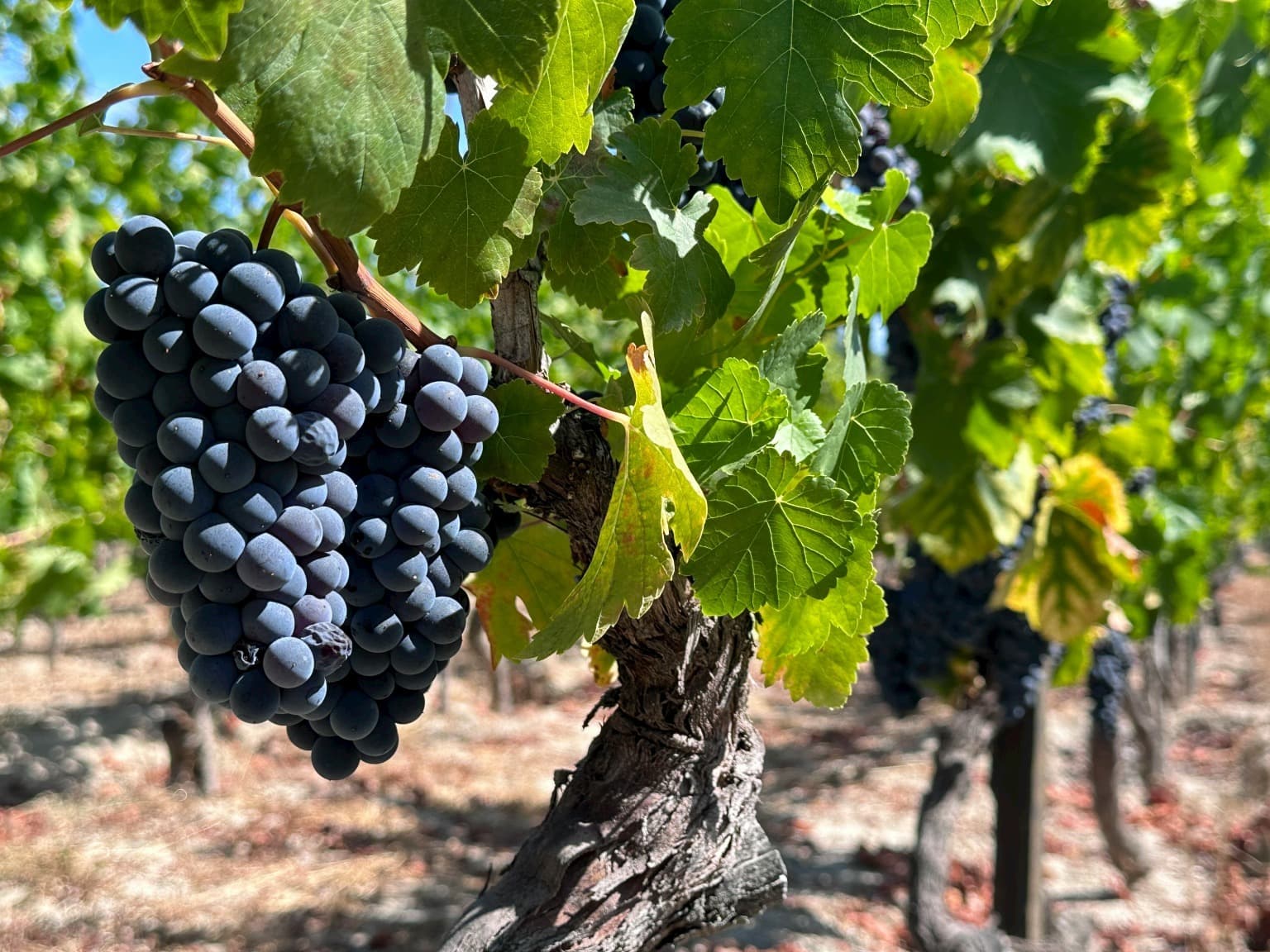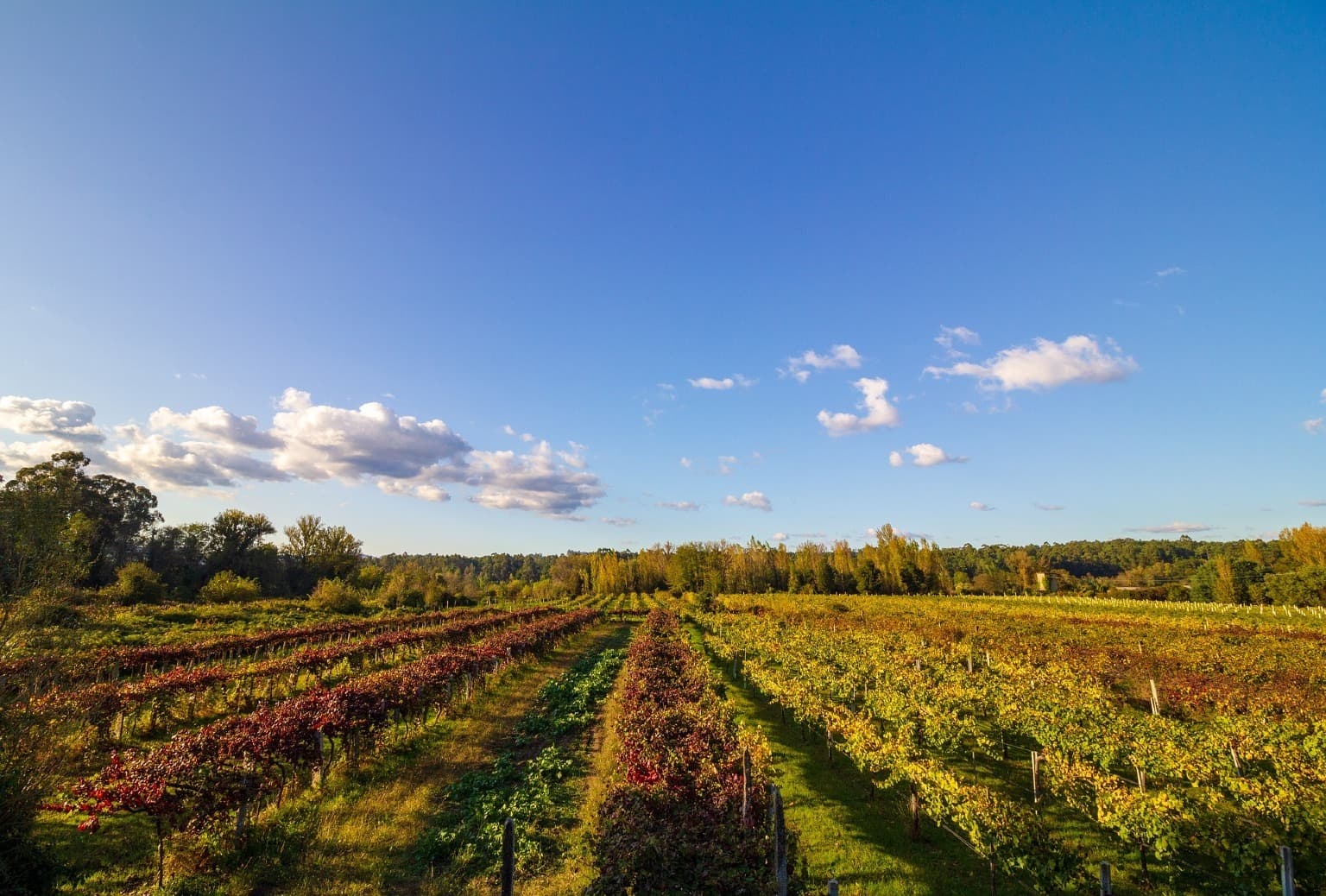Wine Regions near Porto
February 28, 2024
Not far from Porto, Northern Portugal boasts diverse wine regions blending tradition with unique flavors. From the terraced Douro Valley, birthplace of Port wine, to Dão‘s rugged terrain with elegant reds, to Bairrada‘s sparkling Baga wines influenced by the Atlantic, to Vinho Verde‘s crisp delights from the northwest, these regions offer a surprising journey through history, culture, and unparalleled taste.

Dão Region: Touriga Nacional red wine grape in its natural habitat
One of Portugal’s premier wine regions is the Douro Valley, often referred to as the birthplace of Port wine. The region is marked by terraced vineyards along the steep slopes of the Douro River, where its unique microclimate and schist soils create ideal conditions for grape cultivation. Recognized for its cultural and historical significance, the Douro Valley has earned UNESCO World Heritage Site status and holds the distinction of being the world’s first demarcated wine region. The fame and sought-after status of wines from this region trace back to a pivotal moment when Charles II banned the import of French wines. This led the English market to seek alternative sources, sparking an interest in full-bodied Port wines. Initially unable to be transported overland, the wines were taken to the city of Oporto and shipped to the United Kingdom. To preserve the wine during the lengthy sea voyage, it was fortified with Brandy, preventing spoilage. As these wines were exported from the city of Oporto, they became known as Port wines.
The Douro Valley, situated in the northeast of Portugal within the Douro River basin, is surrounded by mountains, which contribute to its unique microclimatic and climatic features. Covering around 250,000 hectares, the region naturally divides into three sub-regions: Lower Corgo (Baixo Corgo), Upper Corgo (Cima Corgo), and Upper Douro (Douro Superior). The Lower Corgo region spans over half of the demarcated area, stretching from Barqueiros to the River Ceira in the municipality of Peso da Régua on the right bank of the Douro River. On the left bank, the Upper Corgo region extends from the parish of Barrô to the Temilobos River near the town of Armamar, making up 36% of the demarcated area. Beyond the borders of the Lower Corgo to the meridian passing through Cachão da Valeira lies the Upper Douro, the furthest inland section. This area, characterized by terraced vineyards, encompasses about 20 percent of the available vineyard land in the Douro.
In addition to the influential presence of Port wine and DOC wines, Portugal boasts other distinctive wines from various regions. Dão wine, originating from the center of Portugal, specifically the province of Beira Alta, represents the country’s primary demarcated region for non-liqueur wines and stands as its second demarcated wine region. The Dão wine region is characterized by its rugged terrain and granite-based soils, which impart a distinct mineral quality to the wines produced here. Renowned for its red wines crafted from indigenous grape varieties like Touriga Nacional, Tinta Roriz, and Jaen, Dão wines often exhibit elegant tannins and vibrant acidity, with flavors ranging from ripe dark fruits to herbal notes, making them an excellent complement to a wide array of dishes.
Moving towards the coast, the Bairrada wine region, nestled within the province of Beira Litoral and the Centro region, enriches the diversity of Portuguese wines. Known primarily for its sparkling wines made from the Baga grape variety, Bairrada also produces still wines of notable quality. The region’s proximity to the Atlantic Ocean influences its maritime climate, contributing to the freshness and acidity evident in its wines. In recent years, Bairrada has seen a resurgence in interest and quality, with winemakers focusing on traditional methods alongside modern techniques to showcase the unique terroir of the region.
While not directly adjacent to Porto like the Douro Valley, the Vinho Verde region, situated to the northwest, is another significant wine-producing area. Vinho Verde, which translates to “green wine,” is known for its light, crisp, and slightly effervescent characteristics, often enjoyed when young. Produced from indigenous grape varieties such as Alvarinho, Loureiro, and Trajadura, Vinho Verde wines exhibit refreshing acidity and vibrant fruit flavors, making them perfect for warm-weather sipping. The region’s cool, rainy climate further enhances the wine’s freshness, while the diverse terroir, ranging from granite to schist soils, adds complexity to its flavor profile. In recent years, Vinho Verde has gained popularity internationally for its approachable yet distinctive wines, offering a delightful taste of Portugal’s northwest terroir.

Monção & Melgaço Vineyards, Alvarinho Haven post-Harvest